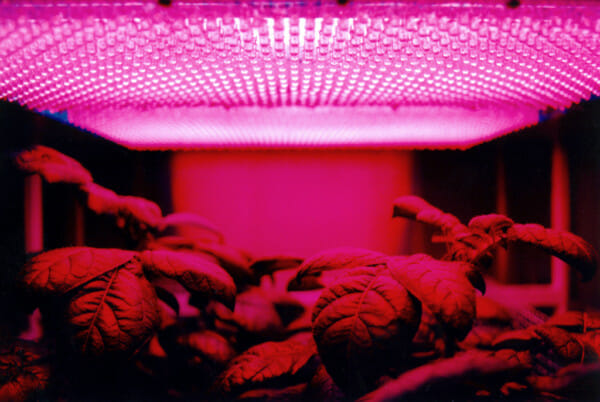Green: Nature’s Rejected Color
It’s Friday, and I don’t feel like writing about trucks. Here’s something of general interest which might change the way you look at the world. Let’s talk about “green”.
Green is the undisputed iconic color of environmental concern. Lightning Systems is in the “green transportation” sector, we tag our tweets “#greentech”, there are Green Parties in the US and the UK, there’s a Green Building Council, and just take a look at a Google search for “eco” images. Trees, grass and leaves are everywhere in planet-friendly communications. It would be unthinkable to have a red “eco friendly” icon:

So why green?
Well, obviously, that’s the color of plants. Forests are the quintessential symbol of a healthy planet, as well as being a key source of oxygen and a major carbon sink.

Bringing greenery into cities provides huge benefits, including air quality, physical and mental health, air temperature and wildlife. Plants are very justifiably the symbol for environmental activism and policy.
So why are plants green?
Well… because of chlorophyll. Chlorophyll is the molecule in plants which absorbs sunlight and synthesizes the chemicals which deliver energy to the plant’s cells, while generating oxygen as a by-product. That’s photosynthesis. Chlorophyll in grasses is literally making hay while the sun shines, lol.
But… why is chlorophyll green?
I’m glad you asked. That’s what I actually want to talk about.
You probably know that the white light we get from the sun is a mixture of all the colors in the rainbow. After all, rainbows are sunlit, which kinda proves the point. Chlorophyll molecules get their energy from the sun by absorbing light, which energizes electrons to drive the required chemical reactions. But not just any light… Chlorophyll absorbs mostly violet, blue and red light. Take a look at this “absorption spectrum” graph:

Source: NASA
You can see that chlorophyll absorbs strongly in the blue and red parts of the spectrum, but absorbs almost no light in the green part – and that’s why plants are green. Green light isn’t absorbed so it gets reflected, and that’s what we see when we look at a tree.
Putting it another way… Plants are green because green light is the spurned, rejected dregs of the visible spectrum after plants have finished with the sunlight. 😉
And that’s true: It explains why LED “grow lights” in modern greenhouses (big business here in Colorado, cough) are a rather surprising pink color. Typically, these lights contain red and blue LEDs, which generate the colors that the plants need for photosynthesis. By omitting green LEDs, energy is saved: the plants wouldn’t use the green light anyway.

Actually, we should take our hats off to photosynthesis, since it’s what powers almost all life on Earth. True, we don’t photosynthesize (even on the beach); but plants are at the bottom of every food chain that feeds almost all animals world-wide, including us. Not to mention the oxygen that plants generate which we kinda need. So the humble chlorophyll molecule is doing a great job, even if it does spit out the color green in the process.